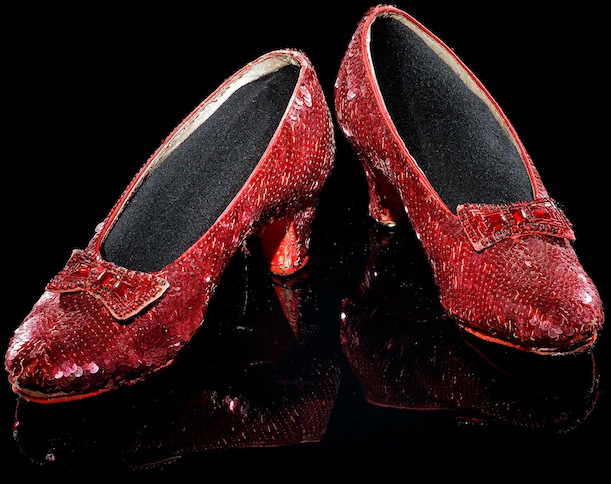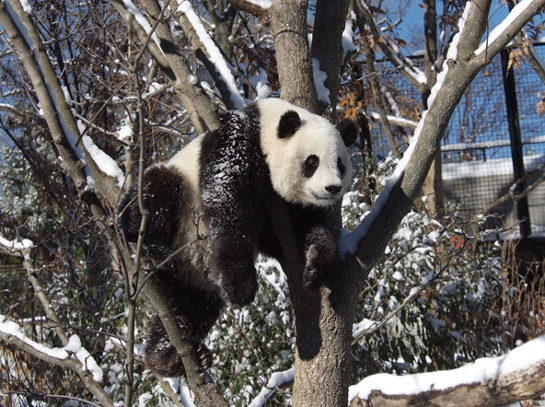Smithsonian Museums and the Panda Cam are Back in Business Today
After the 16-day government shutdown, visitors can once again visit the Smithsonian museums and the National Zoo relaunches the panda cam
/https://tf-cmsv2-smithsonianmag-media.s3.amazonaws.com/filer/20131017040042fireworks-470.jpg)
The doors of the Smithsonian Institution’s 19 museums and galleries will open today, following the 16-day government shutdown. The National Zoo will reopen on Friday, October 17 at 10 a.m.; but the Pandacam is expected to go live Thursday afternoon. Regularly scheduled hours—10 to 5:30 for the museums located on the National Mall, and 11:30 to 7 for the American Art Museum and the National Portrait Gallery—are to resume. Programs will also get underway, but officials recommend checking the Institution’s website for updates on rescheduling and reimbursement for previously canceled events.
The Smithsonian’s fall calendar of exhibitions has a number of much anticipated shows in the works including the highly acclaimed “Dancing the Dream” at the National Portrait Gallery and the Sackler Gallery’s much-anticipated “Yoga: The Art of Transformation.”
As the doors open and the staff welcomes visitors, a number of old favorites await the crowds—the Hope Diamond, the Wright Flyer, Lincoln’s Top Hat, the Ruby Slippers, to name a few of the 137 million artifacts and artworks held in the collections. The Zoo, meanwhile, promises to release an update later today of the panda cub’s growth over the past two weeks.
Five exhibitions you won’t want to miss include:
“You Can, You Will, You Must” Just before the government shutdown, the National Museum of American History installed a stunning billboard from the World War II era. The poster was conserved and reassembled in 12 separate parts and looks just as fresh and vibrant as it did at the beginning of the war, when it debuted.
“Mud Masons of Mali” On view in the Natural History Museum’s African Voices Focus Gallery, this exhibition profiles three generations of masons: master mason Konbaba, 77; masons Boubacar, 52, Lassina, 49, and Salif, 33; and apprentice Almamy, 20. They belong to the Boso ethnic group, which founded present-day Djenné (pronounced JEN-NAY) in the 13th century A.D.
“The William H. Gross Stamp Gallery” The National Postal Museum’s new 12,000-square-foot addition, which opened last month, features some 20,000 philatelic objects, including America’s most famous stamp, the Inverted Jenny.
“Portraits of Planet Ocean: The Photography of Brian Skerry” The how features 20 poignant images of life under the sea. Brian Skerry, an award-winning National Geographic photographer, has spent the last 30 years documenting the world’s most beautiful—and most imperiled—marine environments.
“Leonardo da Vinci’s Codex on the Flight of Birds” Did you know that Leonardo da Vinci was an early innovator in the science of aviation? Between 1505 and 1506, the legendary polymath created his “Codex on the Flight of Birds,” an 18-page notebook containing detailed observations on aerodynamics. A digitized version of the d0cument went to Mars on the Curiosity Rover in 2011. The original codex is at the National Air and Space Museum, but only until October 21, so hurry in.

The Hope Diamond’s journey began in India, where it was mined in the mid-17th century before passing through the hands of chivalrous knights and kings—including Louis XVI and his wife, Marie Antoinette—jewelers and socialites. Its legendary curse might be a ruse, dreamed up by the fine marketing instincts of one Pierre Cartier, who sold the diamond to the flamboyant Washington, D.C. socialite Evalyn Walsh McLean in 1910. McLean sometimes draped it around the neck of her dog. Cursed or not, it was a lucky day when it arrived at the museum in 1958. More than 100 million people have come to see it. Photo courtesy of the Smithsonian Institution

Though Abraham Lincoln owned a number of hats, this one has a tragic story. The last time he put this one on was to go to Ford’s Theatre on April 14, 1865; he set it next to his chair shortly before a bullet from John Wilkes Booth’s pistol ended his life. Photo by Richard Strauss

Thousands travel from all over the world to see the Ruby Slippers that brought Dorothy back to Kansas with three clicks of her heels in the 1939 film The Wizard of Oz. Judy Garland wore these ruby slippers (there was more than one pair) while dancing on the Yellow Brick Road. Photo by Richard Strauss

. Constructed of a lightweight spruce and ash, with a fine-weave muslin sewn over the wooden framework, the Wright Flyer was the first powered, heavier-than-air machine to achieve controlled, sustained flight. The longest flight that day, with Wilbur at the controls, was 852 feet and lasted 59 seconds. Photo by Eric Long
/https://tf-cmsv2-smithsonianmag-media.s3.amazonaws.com/accounts/headshot/Beth_Head_Shot_High_Res-14-v2.png)

/https://tf-cmsv2-smithsonianmag-media.s3.amazonaws.com/accounts/headshot/Beth_Head_Shot_High_Res-14-v2.png)